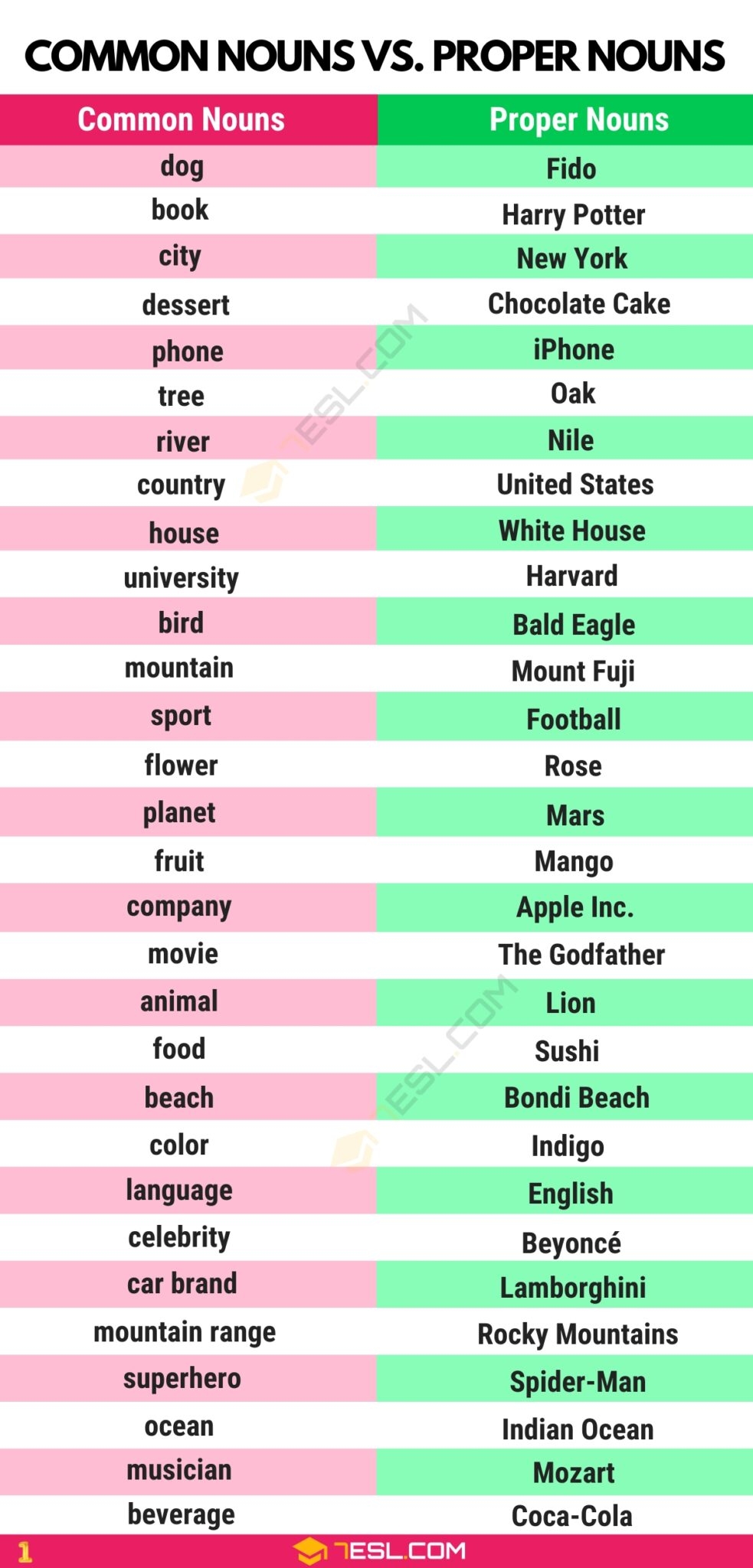When it comes to the English language, nouns can be categorized into two main types – common nouns and proper nouns. Understanding the difference between these two types of nouns is essential for effective communication and writing. In this article, we will explore the distinctions between common and proper nouns and provide examples to illustrate their usage.
Common nouns are general names for people, places, things, or ideas. They are not capitalized unless they appear at the beginning of a sentence. Common nouns refer to any member of a general class and do not specify a particular individual. For example, “dog,” “city,” and “book” are all common nouns.
On the other hand, proper nouns are specific names for people, places, or things. They are always capitalized, regardless of where they appear in a sentence. Proper nouns identify a particular individual, place, or thing. Examples of proper nouns include “London,” “Mary,” and “The Great Gatsby.”
One key difference between common and proper nouns is that common nouns can be preceded by articles such as “a,” “an,” or “the,” while proper nouns are not. For example, you can say, “I saw a dog in the park,” where “dog” is a common noun. However, you would say, “I visited Paris last summer,” where “Paris” is a proper noun and does not require an article.
Additionally, common nouns can be made plural by adding “s” or “es” at the end, while proper nouns usually do not change form when made plural. For example, you can say, “I have two dogs,” where “dogs” is the plural form of the common noun “dog.” In contrast, you would say, “I met the Smith family,” where “Smith” remains the same in its plural form.
In conclusion, common nouns and proper nouns serve different functions in the English language. While common nouns are general names for people, places, things, or ideas, proper nouns are specific names that identify particular individuals, places, or things. Understanding how to differentiate between common and proper nouns is crucial for effective communication and writing.
